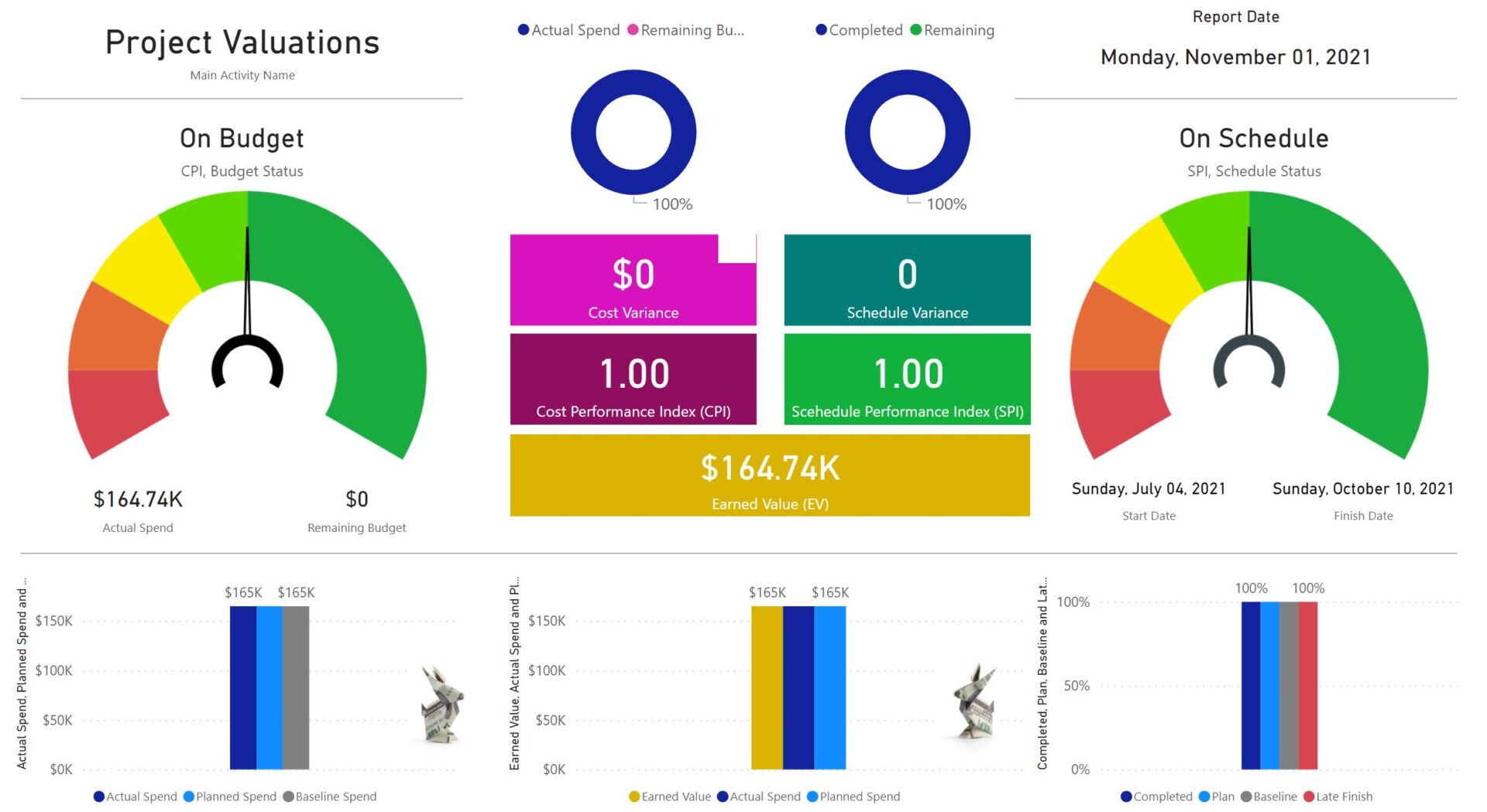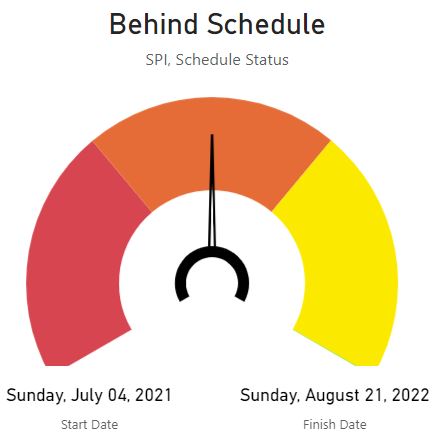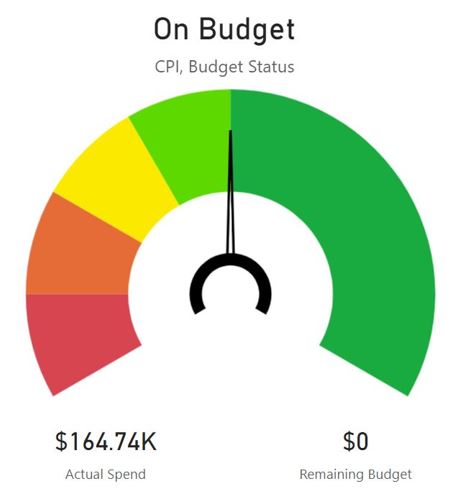EARNED VALUE MANAGMENT
Earned Value
The Earned Value (EV) is often used to determine the percent complete of a project.
It is the budget associated with the authorized work that has been completed.
The EV being measured needs to be related to the Performance Measurement Baseline (PMB), and the EV measured cannot be greater than the authorized Planned Value (PV) budget for a component.
Earned Value Management Software
Earned Value calculations should not be taken lightly. It is everchanging and critical to how a project is managed.
The good news is Speedicalc's Earned Value Software has you covered.
The Speedicalc project calculator is PMIS tool, which provides progress measurement criteria for each WBS component/activity to measure work in progress.
Project Managers monitor EV both incrementally to determine current status and cumulatively to determine the long-term performance trends.
Earned Value Management Explained
Imagine you’re steering a ship across the vast ocean of project management. You have a map, a compass, and a destination. Earned Value Management (EVM) is your trusty lighthouse, guiding you through the fog of financial forecasts and scheduling snarls. It’s a technique that shines a light on your project’s true progress, blending cost and schedule performance into a beacon of insight.
The Journey of Project Value
As you embark on your project voyage with Speedicalc, each task is like a wave you ride, each with its own value, mirroring the budgeted costs. Successfully navigating these waves means you’ve earned a slice of your project’s treasure, making EVM a compass for gauging your journey’s success.
Navigating Through Stormy Seas of Cost Overruns
It’s a turbulent world out there. Oxford’s own Professor Bent Flyvbjerg charted that nine out of ten large-scale voyages—mega projects, if you will—sailed into the stormy waters of cost overruns, with expenses ballooning by an average of 28 percent more than the captains had planned.
The Incremental Icebergs
Yet, these financial tempests aren’t always the work of a single, disastrous maelstrom. Chris Ronak, a seasoned navigator from ProjectTimes.com, observed that it’s the small, incremental icebergs, often unnoticed, that can breach a project’s hull. These are the silent budget busters that, if not carefully monitored, can lead to a Titanic-scale disaster. EVM emerged as a lifeline, initially thrown to sprawling defense projects to keep them afloat.
How Speedicalc’s Earned Value Management Software Illuminates the Path
With Speedicalc, you’re not just comparing numbers; you’re comparing progress; automatically. Let’s set sail with an example:
You’re 20 days into a 30-day journey with a treasure chest of $30,000. You’ve spent $20,000. It’s easy to think you’re sailing smoothly, but what if you’ve only charted half the course? You’ve used two-thirds of your gold but only covered half the distance. This could mean sailing into overtime or extending your voyage.
Charting the Course with Planned Value
In EVM, every leg of your journey is assigned a share of the treasure based on its part in the overall quest. For instance, if half your voyage is charted to be complete in 15 days, that’s a planned value of $15,000. On the 15th day, you compare this planned value with the earned value—the distance you’ve actually covered. If they match, you’re on course. If the planned value outpaces the earned, you’re lagging behind; if it’s the other way around, you’re ahead of the wind.
Keeping an Eye on the Actual Cost
Another crucial gauge is the actual cost—the gold you’ve spent at a certain point in your journey. Say, on day 15, your planned and earned values are both at $15,000, signaling smooth sailing. But if your actual cost is $20,000, then you’re on course but spending more gold than you should.
With Speedicalc’s Earned Value Management Software, you have a powerful sextant to measure your project’s true position against the tides of time and budget, ensuring you reach your project’s New World on time and with treasure to spare.

Performance Measurement Criteria Project Status Using EV
You cannot talk about Earned Value (EV) without knowing and understanding Schedule Variance (SV), Cost Variance (CV), Schedule Performance Index (SPI), and Cost Performance Index (CPI).
These variables are calculated by integrating earned value together with the schedule and cost data to obtain their current status.
Schedule Variance
Schedule Variance (SV) is the measure of schedule performance expressed as the difference between earned value and the planned value.
It is the amount by which the project is ahead or behind the planned delivery date, at a given point in time.
It is the measure of schedule performance on a project.
It is equal to the earned value minus the planned value (EV-PV).
The EVM schedule variance is a useful metric in that it can indicate when a project is falling behind or is ahead of is baseline schedule.
The EVM schedule variance will ultimately equal zero when the project is completed because all of the planned values will have been earned.
Schedule Variance (SV) is best used in conjunction with critical path methodology (CPM) scheduling.
Schedule Performance Index
The Schedule Performance Index (SPI) is a measure of schedule efficiency expressed as the ratio of earned value to planned value (EV/PV).
SPI measures how efficiently the project team is using its time.
It is sometimes used in conjunction with the cost performance index (CPI) to forecast the final project completion estimates.
An SPI less than 1.0 indicates less work was completed than was planned . An SPI greater than 1.0 indicates that more work was completed than was planned.
Since the SPI measures all project work, the performance on the critical path also needs to be analyzed to determine whether the project will finish ahead of or behind its planned finish date.
As shown below, PCS provides gauges identify schedule status.

Cost Performance Index
CPI is considered the most critical EVM metric and measures the cost efficiency for the work completed.
A CPI value less than 1.0 indicates a cost overrun for work completed. A CPI value greater than 1.0 indicates a cost underrun of performance to date.
The indices are useful for determining project status and providing a basis for estimating project cost and schedule outcome.
As shown below, PCS provides gauges identify budget status.

Cost Variance
Cost Variance (CV) is the amount of budget deficit or surplus at a given point in time, expressed as the difference between earned value and the actual cost (EV-AC).
It is a measure of cost performance on a project.
The cost variance at the end of a project will be the difference between the budget at completion (BAC) and the actual amount spent (AC).
The CV is particularly critical because it indicates the relationship of physical performance to the costs spent.
Negative CV is often difficult for the project to recover.
Master EVM with Speedicalc's Examples & Explanations - See Below
Mastering Project Metrics: A Comprehensive Guide to EVM with Speedicalc
Let’s embark on a new journey with Speedicalc and explore the concepts of Earned Value Management (EVM) using the following example. We’ll navigate through the key metrics of Budget At Completion (BAC), Planned Value (PV), Earned Value (EV), Actual Cost (AC), Estimate To Complete (ETC), Estimate At Completion (EAC), and Variance At Completion (VAC).
Setting Sail: Budget At Completion (BAC). The BAC is the treasure chest you aim to fill by the end of your project. It’s the total budget you’ve set for your entire voyage.
Guiding Star: Planned Value (PV) PV is the part of the treasure you plan to have collected by a certain date. It’s your guiding star, showing you the way forward.
Treasure Found: Earned Value (EV) is the actual part of the treasure you’ve successfully unearthed. It’s the real progress you’ve made.
The Cost of the Journey: Actual Cost (AC) is the sum of all the coins you’ve spent on your journey so far. It’s the actual expenditure.
Forecasting the Horizon: Estimate To Complete (ETC) is the cost you anticipate incurring to complete the remaining part of your project.
Predicting the Final Treasure: Estimate At Completion (EAC) is the forecast of the total budget you will have spent by the time your project is complete.
Measuring the Difference: Variance At Completion (VAC) is the difference between what you planned to spend (BAC) and what you will actually spend (EAC).
Let’s apply these concepts to a new scenario:
Imagine you’re leading a project with a BAC of $200,000, scheduled to last 50 days. You plan to complete 2% of the project each day.
Day 25 Checkpoint:
Planned Value (PV): By day 25, you planned to complete 50% of the work.
Earned Value (EV): However, you’ve only completed 45% of the work.
Actual Cost (AC): You’ve spent $95,000 so far.
Estimate To Complete (ETC): Now, you need to estimate the cost to complete the remaining work.
Estimate At Completion (EAC): Your forecast for the total cost at completion is:
Variance At Completion (VAC): The variance between your original budget and the estimated total cost is:
This means you’re currently behind schedule and over budget, as indicated by a negative VAC. With Speedicalc’s Earned Value Management Software, you can now take the helm and steer your project back on course, ensuring that you reach your destination with your budget and schedule intact.
Mastering Project Metrics: A Comprehensive Guide to EVM with Speedicalc
Let’s set sail on another voyage together and explore the concepts of Earned Value Management (EVM) with a fresh set of variables. We’ll navigate through Cost Variance (CV), Cost Performance Index (CPI), Schedule Variance (SV), and introduce the Schedule Performance Index (SPI).
Embarking on the Journey: Project Variables
Budget At Completion (BAC): $150,000
Project Duration: 75 days
Work Completion Plan: 2% per day
Day 30 Checkpoint:
Planned Value (PV): By day 30, we planned to complete 60% of the project.
Earned Value (EV): However, we’ve only completed 50% of the work.
Actual Cost (AC): We’ve spent $80,000 so far.
